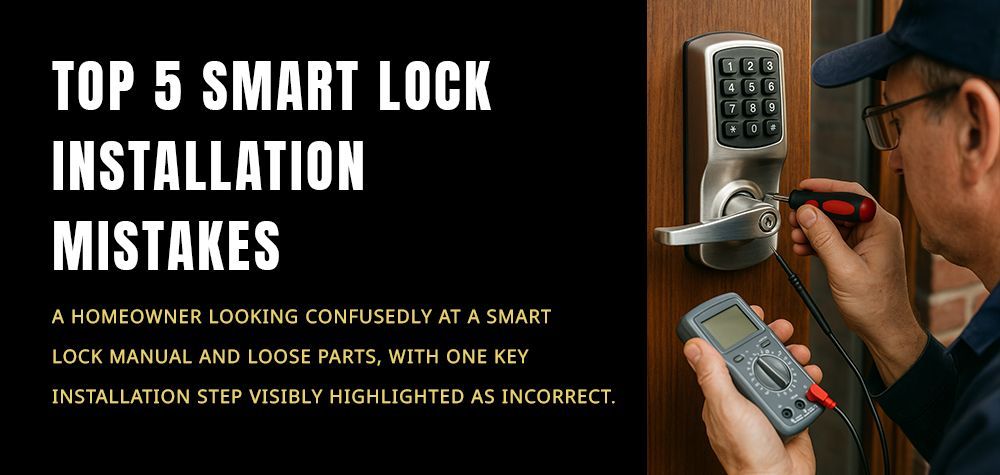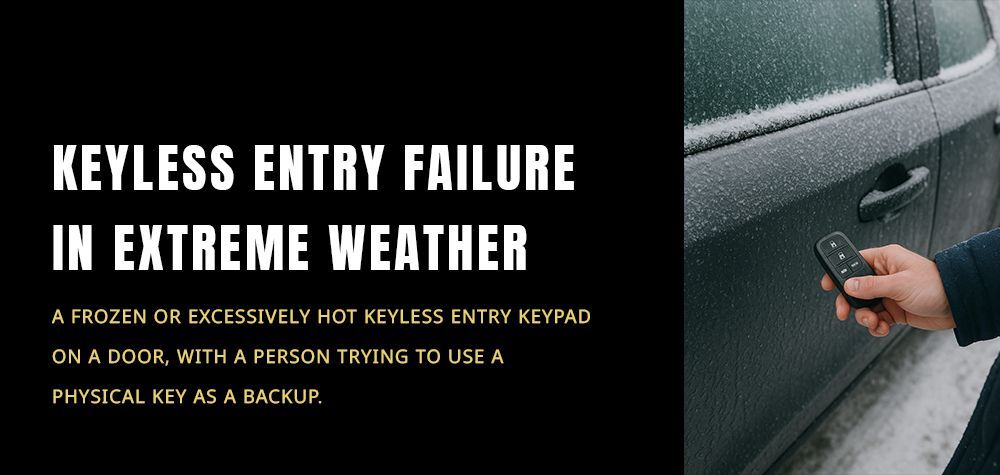Home Lockouts: How to Regain Entry Without Breaking Anything
We’ve all had that heart-dropping moment—standing outside your home, patting every pocket, digging through your bag, only to realize: your keys are inside, and you’re not. Whether you slammed the door shut behind you or misplaced your keys during the day, home lockouts happen more often than you'd think.
But here’s the good news: you don’t have to break a window or damage your door to get back in. There are safe, effective, and professional ways to regain entry—most of them surprisingly simple. In this guide, we’ll walk you through exactly what to do (and not do) when you’re locked out, plus offer some preventative tips to make sure it never happens again.
"Top 10 Signs You Need a Residential Locksmith"
Step 1: Stay Calm and Evaluate the Situation
It’s tempting to panic, especially if you’re in a rush or it’s late at night. But take a deep breath and assess your surroundings first.
Is there anyone home who can let you in?
Is there an unlocked window or alternative door that you might have forgotten?
Are your neighbors nearby, and do they have a spare key?
Before you consider anything drastic, exhaust the simple options.
Step 2: Check for Unlocked Entry Points (But Be Safe About It)
Take a quick walk around your house. Many people forget about side doors, garage entrances, or basement windows. If you find a window or door that's unlocked, check that it's safe and easy to access without injury or damage.
Be mindful of your safety—don’t climb up onto unstable surfaces or force anything open. A fall or injury will only make things worse.
Step 3: Call Someone You Trust
If you’ve given a spare key to a neighbor, friend, or family member, now’s the time to call them. This is why sharing a spare key with someone nearby is such a practical move—especially if you live alone.
If your landlord or building manager holds a key, reach out. Most are used to handling lockout situations and may be able to let you back in quickly.
Step 4: Try a Credit Card Trick (Only If It’s Legal and Your Door Allows It)
Okay, this might sound like something from a movie—but it can sometimes work, especially with spring bolt-style locks. If the lock isn't deadbolted, you might be able to slide a laminated card between the frame and the latch to pop it open.
That said, this trick only works with very old or poorly installed locks, and it doesn’t work on modern deadbolts or high-security doors. And of course, only try this on your own home—using it elsewhere could be considered illegal.
Step 5: Call a Professional Locksmith
If nothing else works, and you’re locked out for good, don’t resort to breaking windows or kicking in the door. Call a licensed residential locksmith instead.
Locksmiths have the tools, training, and experience to open most residential locks without causing any damage. Whether it’s lock picking, using a bump key, or decoding your smart lock system, they’ll have a non-destructive solution ready. Plus, many locksmiths offer emergency 24/7 services and can arrive at your location fast.
Step 6: Verify Your Identity
When the locksmith arrives, be ready to show proof that you live in the home. Most professionals will request some form of ID or verification before unlocking the door. This is standard practice to prevent unauthorized access and keep you safe.
If your ID is inside the house, they may ask a few questions or wait until you're inside to verify your identity.
Step 7: Regain Entry—Without Breaking a Thing
Once the locksmith successfully gets you in, take a moment to inspect the lock. Was it damaged or malfunctioning? Did the key break inside? A good locksmith will let you know what happened and offer tips or solutions if a repair or replacement is needed.
This might also be a great time to discuss better locking options or smart upgrades to help prevent future lockouts.
Preventive Tips: How to Avoid Getting Locked Out Again
1. Duplicate Your Keys:
Keep a spare key hidden in a secure place, like a lockbox, or give one to a trusted neighbor or friend.
2. Install a Smart Lock:
Digital keypads and smart locks let you enter a code or use your phone—no physical key required.
3. Use Key Finders or Trackers:
Attach a Bluetooth tracker to your keychain. If your keys are lost nearby, you'll find them in seconds.
4. Establish a Key Routine:
Always put your keys in the same spot—your bag, your coat hook, your entryway shelf. Creating a habit reduces forgetfulness.
5. Rekey or Replace Faulty Locks:
If your locks are getting sticky or unreliable, don’t wait. A worn-out lock is a future lockout waiting to happen.
Final Thoughts: Don’t Let a Lockout Ruin Your Day
Lockouts are frustrating, no doubt. But they don’t have to be destructive. With the right mindset, a little patience, and the help of a qualified locksmith, you can be back inside quickly—and safely.
Consider this a learning opportunity. After you’re back inside, take a moment to set up safeguards that make future lockouts much less likely.
Call Us Any Time!






